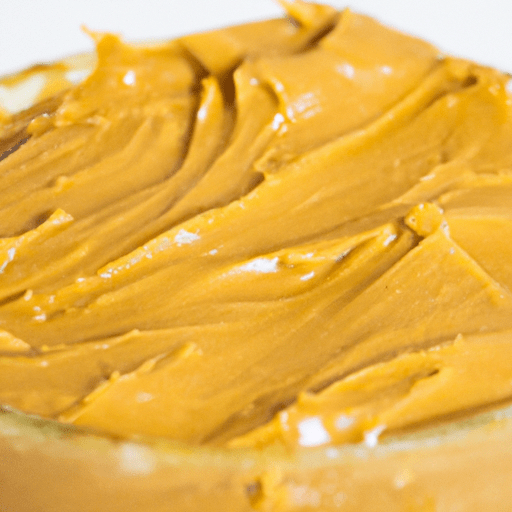Low Fat Peanut Butter: A Healthy and Delicious Option
When it comes to nut butters, peanut butter holds a special place in our hearts. It’s creamy, rich, and oh-so-delicious. However, if you’re looking for a healthier alternative without compromising on flavor, low fat peanut butter is the way to go. In this blog post, we’ll delve into the delightful world of low fat peanut butter, exploring its taste, common uses in cooking, nutritional value, and some interesting history and facts.
The Taste of Low Fat Peanut Butter
Low fat peanut butter is slightly different in taste compared to the regular counterpart, but that doesn’t mean it lacks flavor. While it may be less indulgent, it still possesses that familiar nutty and creamy essence that we all adore. The lower fat content brings a lighter and less oily texture, making it ideal for those watching their waistlines or looking for a more subtle flavor profile.
Cooking with Low Fat Peanut Butter
One of the great things about peanut butter, whether low fat or regular, is its versatility in the kitchen. Low fat peanut butter can be used in a myriad of culinary creations, adding depth and nuttiness to both sweet and savory dishes. Here are a few popular ways to incorporate it into your cooking:
1. Smoothies and Shakes
Low fat peanut butter is a fantastic addition to your morning smoothie or post-workout shake. It not only adds a delightful nutty taste but also contributes a dose of healthy fats and protein. Pair it with bananas, cocoa powder, and almond milk for a deliciously satisfying treat.
2. Salad Dressings
For a low-fat alternative to traditional salad dressings, try mixing low fat peanut butter with vinegar, soy sauce, lime juice, and a touch of honey. The resulting dressing will elevate your salad with a unique and tantalizing flavor.
3. Baked Goods
Who can resist the allure of peanut butter cookies or fudgy brownies? Replace traditional peanut butter with low-fat peanut butter in your favorite baking recipes to reduce the fat content without sacrificing taste or texture.
4. Stir-Fries and Sauces
Low fat peanut butter can take your stir-fries and sauces to the next level. Combine it with soy sauce, ginger, garlic, and a splash of rice vinegar to create a savory and delectable sauce that pairs perfectly with noodles, vegetables, or chicken.
Nutritional Value of Low Fat Peanut Butter
Low fat peanut butter is not only delicious but also offers several nutritional benefits. While the exact values may vary depending on the brand, low fat peanut butter generally contains approximately:
- Calories: 90-100 per tablespoon
- Protein: 6-7 grams per serving
- Fat: 2-4 grams per serving
- Carbohydrates: 4-6 grams per serving
- Fiber: 1-2 grams per serving
Additionally, low fat peanut butter is a good source of essential nutrients such as vitamin E, niacin, magnesium, and phosphorus. It provides a significant amount of monounsaturated fats, which are considered heart-healthy.
Interesting History and Facts about Low Fat Peanut Butter
- Peanut butter was first invented by George Washington Carver in the late 19th century as a nutritious alternative to butter.
- The demand for low fat peanut butter grew in the late 20th century as people became more health-conscious.
- Low fat peanut butter is made by removing a portion of the oil content from regular peanut butter, resulting in a lower fat percentage.
- Contrary to popular belief, low fat peanut butter still retains most of the original nutrients and flavors found in regular peanut butter.
Conclusion
If you’re looking for a healthier alternative to indulge your peanut butter cravings, low fat peanut butter is a fantastic option. Its pleasant taste, versatility in cooking, and nutritional value make it a worthy addition to any pantry. Whether you’re spreading it on toast, mixing it into smoothies, or creating decadent desserts, low fat peanut butter is a guilt-free way to enjoy the nutty goodness we all love.
Low-Fat Peanut Butter
Origin: Peanut butter is believed to have originated in South America, where ancient civilizations like the Aztecs and Incas mashed roasted peanuts to form a paste. It was only introduced to the United States in the early 1900s by Dr. John Harvey Kellogg as a nutritious protein substitute.
Common Uses: Low-fat peanut butter is often used as a spread on bread or crackers, as a key ingredient in recipes like cookies, cakes, and sauces, and as a filling in sandwiches or as a dip for fruits and vegetables. It can also be incorporated into smoothies or enjoyed on its own as a snack.
Nutritional Benefits: Low-fat peanut butter is a good source of protein, fiber, vitamins, and minerals. It contains heart-healthy monounsaturated fats, which can help lower bad cholesterol levels. Peanut butter is also a great source of folate, vitamin E, and magnesium. It provides a good amount of energy due to its high calorie content.
Unique Properties: Low-fat peanut butter typically contains fewer grams of fat compared to regular peanut butter. It achieves this by reducing the amount of added oils, but can also contain added sugars or sugar substitutes as a result. It still provides the distinctive flavor and rich nuttiness that peanut butter is known for.
Historical Significance: Peanut butter became popular in the early 20th century and gained significant popularity due to its convenience and delicious taste. During World War II, peanut butter was provided as a source of protein to American soldiers. Additionally, it gained worldwide recognition through the efforts of the Peanut Butter for the Hungry campaign, which aimed to feed malnourished individuals around the globe during the 1960s.




Use the share button below if you liked it.
It makes me smile, when I see it.